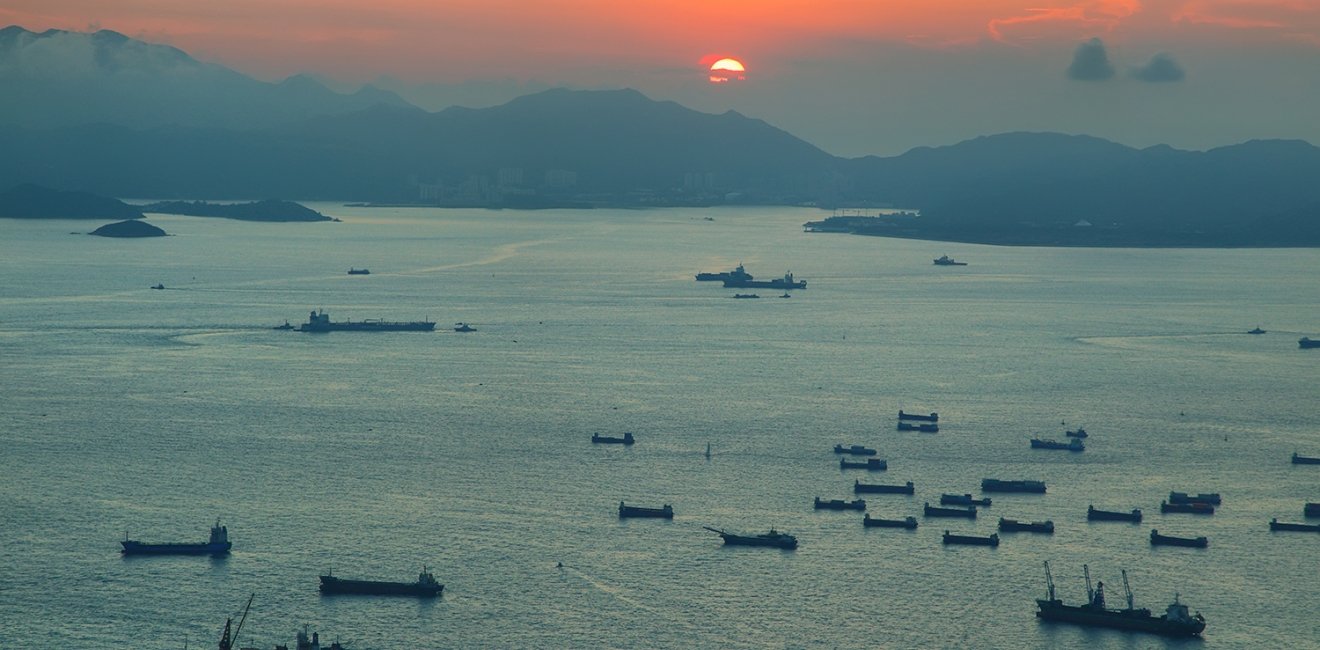
A blog of the Indo-Pacific Program
Southeast Asia is bound to China by geography. Viewed from China, the region is a southern appendage to China, one fragmented into a number of relatively small countries. Ethnographers believe all the major long-established populations in that region originally migrated from China – pushed south over millennia by the expanding numbers of the Han people. Some of those populations, notably the Thai, retain a close affinity to China because substantial numbers of their coethnics still live in southern China. Perhaps ironically, China’s demographic connection to Southeast Asia was significantly reinforced by the advent of Western colonial rule that attracted large numbers of Chinese immigrants to these outposts of European (and American) authority. If they were to be profitable, the colonies required manpower for everything from stevedores and tin miners to bookkeepers and bankers – and there were ample numbers of Chinese from peasants to merchants living near the coast who were eager to seek opportunities in the “Nanyang” (southern seas). As a result, every Southeast Asian country has a substantial, usually urban, and often prosperous, Chinese minority. In the case of Singapore, they are the overwhelming majority. When Malaya became independent if 1957, Chinese were estimated to comprise nearly 40 percent of the population.
China’s dynastic history was so long, it inevitably involved extended, if episodic, contact with Southeast Asia. In the Chinese mind, these contacts were part of a conceptual and moral ordering of the known world captured in the words “Tribute System.”1 As the Middle Kingdom, China was not just the center of civilization; it was the only true civilization. Other peoples on China’s periphery were less than fully civilized and the further removed they were from Chinese cultural influence, the more they were regarded as barbarians. This was of a piece with an overarching Confucian cosmology that saw the family and its carefully delineated hierarchy of authority and obligation – all animated by virtuous conduct – as the key to familial, imperial, and global harmony. From a Western perspective, this produced a profoundly non-Westphalian view of international affairs. Harmonious relationships, whether familial, commercial, personal, or international must necessarily be rooted not in equality, but in hierarchy.
Southeast Asia was seen as a critical, even decisive battleground in the global contest for supremacy between Communism and the West.
For China in the post-World War II era, Southeast Asia represented opportunity on multiple dimensions. For Maoist revolutionaries, including Mao himself, Southeast Asia of the 1950s and early 1960s was an arena where the “Cold War” was hot as active communist insurgencies sought to overthrow colonial and postcolonial regimes in Malaya, the Philippines, Thailand, Burma, and Indochina. These “wars of national liberation” to a greater or lesser degree patterned themselves on the successful example of Mao’s “people’s war.” China supplied advice, inspiration, and in some cases material support to the insurgents. Southeast Asia was seen as a critical, even decisive battleground in the global contest for supremacy between Communism and the West. It was a view shared by the incoming Kennedy administration that decided to invest American blood and treasure into Indochina in order to stem the perceived communist tide.
The death of Mao and the emergence of Deng Xiaoping as paramount leader set China on a very different course in its relations with Southeast Asia. Gone was support for insurgencies and in its place came normal state-to-state relations animated by a shared commitment to economic development and modernization. Southeast Asia remained hugely important, but now the Nanyang comprised the “golden lands” of economic opportunity. Southeast Asia was accessible, richly endowed with natural resources, and already a region enjoying notable economic success – which meant capital and markets for China’s own economy. In the years since Deng, Southeast Asia has been a steadily growing focus of Chinese economic interests, culminating in the current Belt and Road initiative that seeks to push billions of dollars in new infrastructure into the region, built with Chinese money and Chinese workers, and by Chinese companies. The underlying vision is one of Southeast Asia as a natural economic extension to China, itself – Beijing’s geographic and economic bridge to the southern oceans and beyond.
Southeast Asia loomed equally large from a security/strategic perspective. Almost from the outset, PRC leaders and strategists have seen China as the target of an encirclement and containment campaign conducted by the US designed to “keep China down” and ultimately to effect regime change. For contemporary Chinese leaders the example of what “containment” did to the USSR is an omnipresent consideration. Perceptions of encirclement see a ring of US military power from Japan, to South Korea, to Australia. U.S. military forces were active in Indochina and later in Afghanistan. If American designs to encircle and contain China were to be defeated, Beijing needed to identify where it could “break out.”
Writings by Chinese strategists as early as the 1980s identify Southeast Asia as the weak link in the American chain of encirclement. Chinese diplomats in private conversation have long referred to Southeast Asia as the “soft underbelly” of East Asia. From this perspective, North Vietnam’s military victory over the Americans (with substantial Chinese assistance) was a critical strategic watershed. Still, themes of encirclement and containment remain very much part of China’s current strategic vocabulary – and Southeast Asia remains the arena where encirclement and breakout are actively contested.
China, with its long coastline, finally discovered the sea. By the early 2000’s, China’s leadership was openly proclaiming that China was “a maritime country.”
Another seminal development has powerfully reinforced the economic and strategic importance of Southeast Asia. For millennia, China has been a terrestrial power. Historically, the recurring foreign threats to the Middle Kingdom came by land in the form of mounted warriors from Central Asia and Mongolia (and later, Russia). The Great Wall was testimony to the magnitude and duration of this threat. However, by the 19th and 20th centuries the threats to China were coming from the east by sea – first from the Europeans and then the Japanese. When Deng assumed power in 1979, he inherited a China that was an economic ruin thanks to Mao’s demented ideological campaigns and self-imposed international isolation. China was surrounded by Asian economies – Japan, South Korea, Taiwan and several Southeast Asian countries – that were on a trajectory of rapid modernization and growing prosperity. Deng was determined to put China on the same track. The Asian model of economic success involved openness to the global economy (markets, investment, education, and training) and – critically – access to the sea. Modern containerized shipping had made maritime commerce by far the most cost effective way to move goods to markets over great distances. Access to the Pacific offered access to the American market. China, with its long coastline, finally discovered the sea. By the early 2000’s, China’s leadership was openly proclaiming that China was “a maritime country.” This new orientation generated a strategic imperative; China would become “a maritime power,” and it would build and deploy a modern navy. It would not be long before China’s rapidly expanding economy needed to start importing oil – and in large quantities. That oil, primarily from the Middle East, moved by sea through the Strait of Malacca and the South China Sea to Chinese ports. The “sea lanes of communication” (SLOCS in Pentagon parlance) through Southeast Asia had now become critical to China’s economy and security. And with this came a danger: the United States and to a lesser extent the Southeast Asian states bordering the Malacca Strait maintained the security of the SLOCS – not China. Beijing gave a name to this unwelcome vulnerability – “the Malacca Dilemma.”
Throughout China’s very long history, the South China Sea was never a focus of national attention, or even awareness. If a visitor to China in, say, the early 1800s, had an opportunity to query the mandarins of the imperial court about the South China Sea, he would have discovered that they did not know what he was talking about. The South China Sea was simply a place where fishermen went – nothing more. There were not even any Chinese names for the numerous atolls and reefs that dotted the area.
The South China Sea first becomes a factor in Chinese policy when a cartographer working for the Republic of China (ROC) government created a map with a broken line encompassing almost the entire South China Sea. The map was produced at a moment late in World War II when the allied powers were starting to position themselves for a postwar settlement – including new state boundaries. The line was never explained by the ROC (which had far greater concerns fighting for survival against Mao’s Peoples Liberation Army). When the PRC was established, it simply reproduced the same maps with the same dashed line, again with no explanation. In subsequent years, there were occasional attempts by journalists and scholars to obtain some clarification as to the line’s meaning – to little avail. As a result, the line was almost universally ignored. This was understandable, but a mistake, nevertheless. There were, in fact, a number of reasons to believe that the “nine-dash line” was intended to demarcate the maritime boundary of China. One of them – almost universally overlooked – was that the same line also encompassed Taiwan – which everyone knew China claimed as part of its sovereign territory. China’s official (and nonofficial) silence on this score was best understood in terms of a traditional, and very ancient, Chinese aphorism often cited by Deng: “Bide your time; conceal your capabilities; until you are ready to act.” China might intend to assert sovereign possession of the South China Sea, but in the thirty years following Deng’s accession, China lacked the power to enforce such an assertion. Until that changed, China best keep a low profile on the issue.
“Bide your time” did not mean Beijing was entirely constrained. In 1974, a Chinese maritime flotilla with air support attacked a small South Vietnamese military outpost in the Paracel Islands archipelago in the South China Sea. The Saigon government had asserted possession of the archipelago as heir to a French colonial claim to the area. Chinese forces overcame Saigon’s outpost overcome and sunk a South Vietnamese patrol boat with 42 men aboard. China was providing critical assistance to the North Vietnamese war effort and the nominal ties between Hanoi and Beijing were close. Nevertheless, Hanoi maintained a studied silence in public while privately protesting to Beijing. In 1995, the Philippines discovered that China’s military had occupied Mischief Reef, an uninhabited atoll within a part of the South China Sea claimed by the Philippines. When Manila lodged a diplomatic protest, Beijing responded that the installation was merely a life-saving station for Chinese fishermen. The presence of anti-aircraft guns of the roof went unexplained.
The days of “bide your time” were clearly ending as China’s capabilities grew and its readiness to act was palpable.
For the next decade or more, the Chinese government remained entirely opaque concerning the status and meaning of the nine-dash line. At the same time the strategic context for the line was changing fundamentally as China rapidly built a modern military capability – surface vessels, aircraft, submarines, missiles, spaced-based reconnaissance – designed to project power into the South China Sea and Western Pacific. The signature platform was China’s first aircraft carrier, soon to be followed by a second and a third. Chinese Navy assets were greatly augmented by far larger numbers of maritime police/coast guard and they were in turn assisted by a fleet of over 20,000 Chinese fishing boats with many of them carrying armed crewmembers that had received some rudimentary training to enable them to act as instruments of Chinese state power. Taken together, these maritime capabilities, aggressively deployed inside the nine-dash line, gave China an intimidating and potentially dominant strategic presence in the South China Sea. The days of “bide your time” were clearly ending as China’s capabilities grew and its readiness to act was palpable.
“Action” initially took the form of pressure on fishing boats from Southeast Asian littoral states that Beijing accused of encroaching illegally in “Chinese waters.” Filipino and Vietnamese fishermen were arrested and barred from their traditional fishing grounds. At the same time, Southeast Asian states that hoped to profit from oil drilling leases within their South China Sea Exclusive Economic Zones (EEZ) found that China blocked all such attempts. Vietnam bore the brunt of these pressures -- including in episodes in 2011 and 2012 when Vietnamese survey ships mapping the ocean floor within Vietnam’s EEZ were confronted by Chinese naval vessels that deliberately cut the cables to towed sonar arrays. Beginning in 2014 China initiated a new and profound challenge to the status quo ante in the South China Sea by launching a program of island building. Seven uninhabited reefs and atolls – largely or entirely submerged – were turned into dry land features by dredging sand on a vast scale from the surrounding ocean floor and depositing it on the reefs. By 20017 these former reefs and atolls had become full-fledged islands with extensive infrastructure that included airstrips designed for military use. The impact on the maritime ecosystems were catastrophic and the strategic consequences profound. The South China Sea had become a militarized domain of Chinese power.
As Beijing changed the strategic landscape in the South China Sea, it also changed its declaratory position. In 2010, a spokesman for the Ministry of Defense publicly asserted that China had “indisputable sovereignty” over the South China Sea. Xi Jinping declared in 2015 that the South China Sea had been “Chinese territory since ancient times” (A claim unsupported by historical fact). The days of “bide your time” were well and truly over. When an authoritative international tribunal empaneled under the UN Law of the Sea Treaty concluded (and declared) that China’s claim to the South China Sea was without merit, China responded with defiance declaring the judgment was nothing but “trash paper.”
As drawn, China’s nine-dash line overrides and effectively nullifies much, if not most, of the EEZ’s in the region.
The net result is a radical determination to completely recast the strategic landscape of maritime Asia. Under this new reality, the SLOCs belong to China and, by clear implication, other nations will use them only with China’s permission. As drawn, China’s nine-dash line overrides and effectively nullifies much, if not most, of the EEZ’s in the region (The exact impact is unclear because the line remains crudely drawn and cartographically imprecise). The fish, seabed, and other resources of the South China Sea belong to China. Fishermen from other nations will operate there only with Beijing’s approval. Other nations’ navies will be present in the South China Sea only at China’s sufferance. In short, the US Navy will have no more role in the South China Sea than would the Russian Navy have in the Great Lakes.
The breathtaking growth of Chinese ambitions and capabilities is matched by equally dramatic – and portentious – changes in China’s political system and power structure. In 2018, Xi Jinping, China’s president, stripped away any time limits on his tenure in office. He became, effectively, president-for-life. This dramatic assertion of personal power derived from his successful campaign to remove any individuals or institutional power centers that might challenge his position. Xi has effectively become a latter-day Emperor of China, and this emperor has instruments of control unavailable to emperors of the past in the form of intrusive digital monitoring of the movements, activities, and communications of the entire population. All this comes with a clear determination on Xi’s part to shape the very thoughts of the citizenry. In short, China under Xi is becoming a true totalitarian political system. At this point, the implications for Chinese policy are unclear. On the one hand, such an extreme centralization of power allows for rapid adjustments to a dynamic foreign environment. On the other, critical/dissenting voices are stifled and unwelcome facts are suppressed, opening the door to self-delusion and mistakes – even catastrophic ones.
China’s strategic reach into the South China Sea has obvious and profound implications for three sets of international actors: (1) the littoral Southeast Asian states (Vietnam, Malaysia, Brunei, Indonesia, and the Philippines); (2) major maritime countries heavily dependent on the sea lanes through the South China Sea (including Japan, Korea, and Australia); and (3) the United States with both a commercial and military presence in the area. Their interactions with China and with each other will shape the future. That subject will be explored in the next essay in this series.
[1] The term was coined by an American sinologist, John K. Fairbank.
Follow the Asia Program on Twitter @AsiaProgram. or join us on Facebook.
The views expressed are the author's alone, and do not represent the views of the U.S. Government or the Wilson Center. Copyright 2019, Asia Program. All rights reserved.
Author

Adjunct Professor, Johns Hopkins University; Former Professor of National Security Policy, National War College and Deputy Staff Director, Senate Select Committee on Intelligence

Indo-Pacific Program
The Indo-Pacific Program promotes policy debate and intellectual discussions on US interests in the Asia-Pacific as well as political, economic, security, and social issues relating to the world’s most populous and economically dynamic region. Read more





